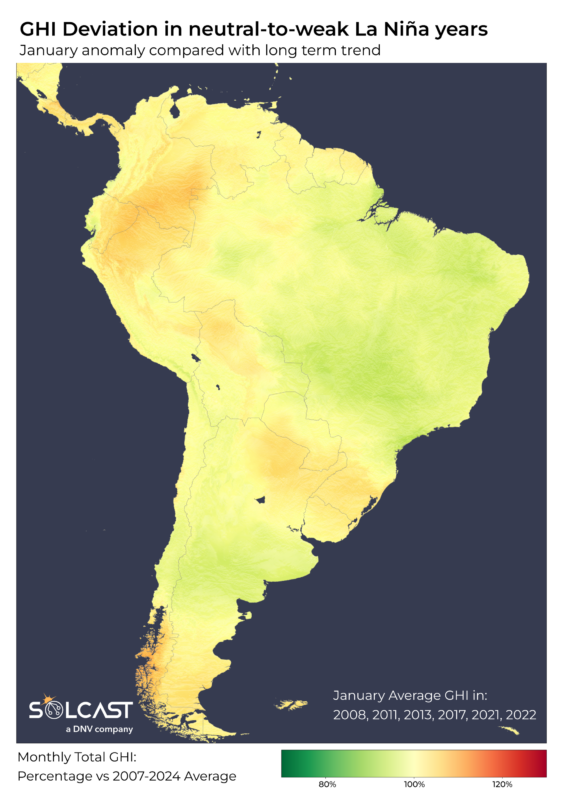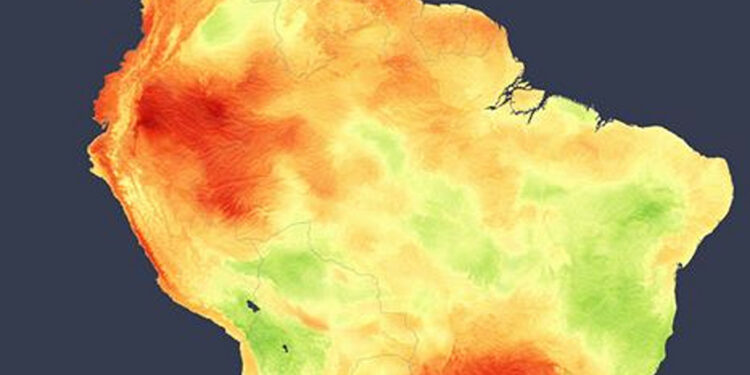While some modeling agencies have declared La Niña conditions for January, supported by Pacific sea surface temperatures that meet La Niña thresholds, historical data shows weak events rarely drive such increases in irradiance. Compared to similar ENSO years, January 2025 saw higher irradiance anomalies, particularly in the western and southern parts of the continent. This aligns with earlier forecasts predicting a bright summer season in the region. Moreover, record warm global sea surface temperatures, an ongoing indicator of climate
change, may be influencing and altering the typical impacts of La Niña.

However, not all of South America benefited from these trends. Parts of Brazil and Bolivia saw irradiance levels dip 5-10% below average due to stormy weather and associated cloud cover. These conditions were driven by stronger-than-usual trade winds, which carried
abundant moisture from the anomalously warm Atlantic Ocean into the region. The resulting heavy rainfall led to widespread flooding and landslides, particularly in southeastern Brazil and Bolivia.
These disruptive rainfall events and associated irradiance impacts highlight the challenge of predicting solar conditions in a variable tropical summer climate. La Niña and climate change add to the complexity of the task.
Solcast produces these figures by tracking clouds and aerosols at 1-2km resolution globally, using satellite data and proprietary AI/ML algorithms. This data is used to drive irradiance models, enabling Solcast to calculate irradiance at high resolution, with typical bias of less than 2%, and also cloud-tracking forecasts. This data is used by more than 300 companies managing over 150GW of solar assets globally.
Â
The views and opinions expressed in this article are the author’s own, and do not necessarily reflect those held by pv magazine.
This content is protected by copyright and may not be reused. If you want to cooperate with us and would like to reuse some of our content, please contact: [email protected].
Popular content

Source link : http://www.bing.com/news/apiclick.aspx?ref=FexRss&aid=&tid=67af61bba2a842f5a6c71f4b4db5c926&url=https%3A%2F%2Fwww.pv-magazine.com%2F2025%2F02%2F14%2Fsouth-america-sees-strong-solar-gains-despite-weak-la-nina-conditions%2F&c=8163963983245958557&mkt=en-us
Author :
Publish date : 2025-02-14 02:13:00
Copyright for syndicated content belongs to the linked Source.












